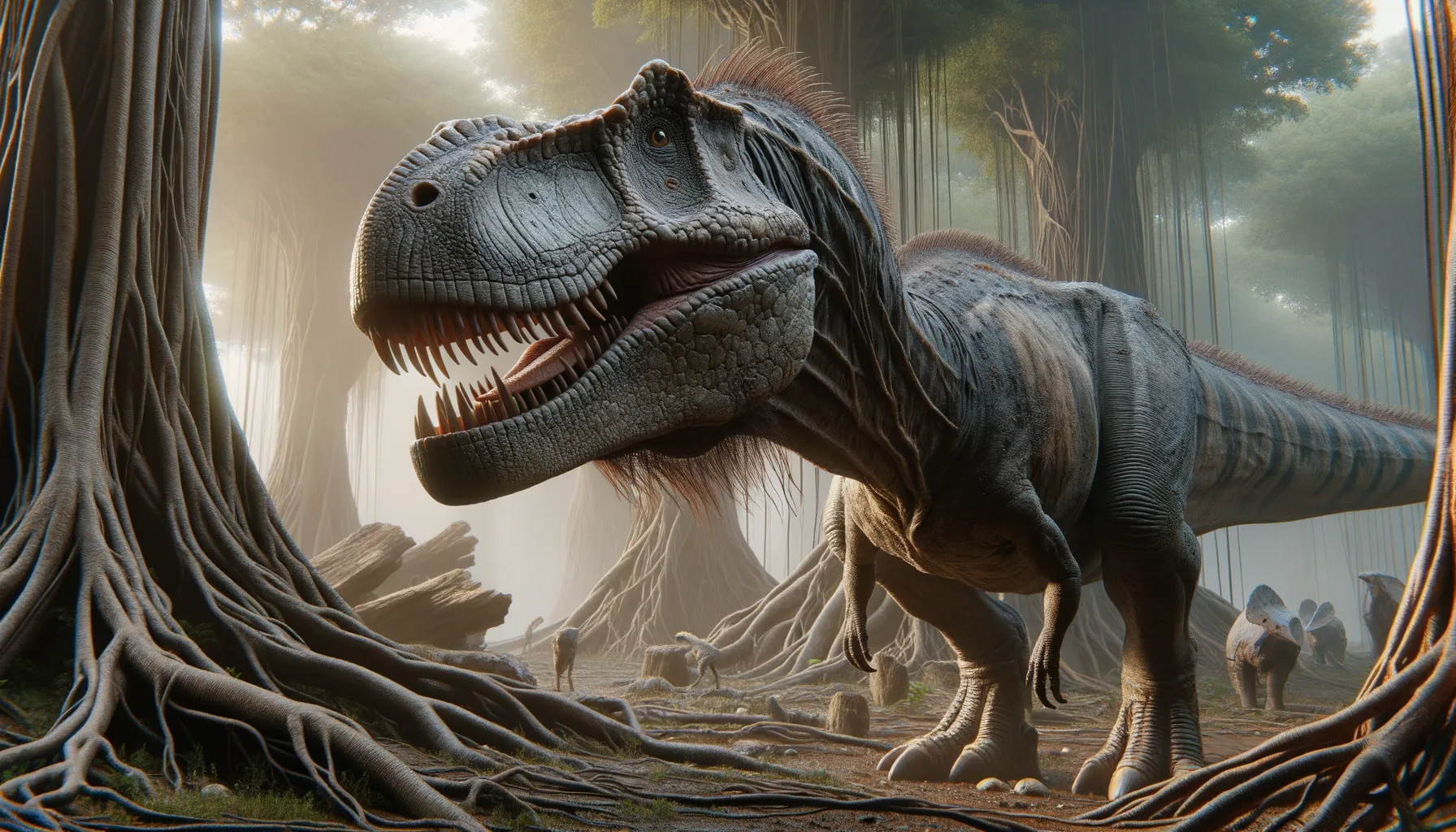
Matheronodon
Herbivore adapted with precision cutting teeth.
Period
Cretaceous
Length
About 5 meters long.
Height
Around 2 meters at the hips.
Weight
Approximately 2 tons.
Matheronodon was a remarkable herbivorous dinosaur from the Late Cretaceous period. Known for its unique teeth, adapted for efficiently cutting through tough plant material, it belonged to the group of dinosaurs known as Rhabdodontids. Its fossils were discovered in France, providing significant insights into the ecosystem it once inhabited. Matheronodon's dentition suggests a specialized diet, highlighting its role in the delicate balance of prehistoric flora and fauna interactions.
Diet
Matheronodon primarily fed on fibrous plants and other tough vegetation. Its teeth were specially adapted to shear efficiently, indicating a diet that included a wide range of plant materials. This adaptation helped it thrive in its environment, where such vegetation was abundant.
Hunting
As an herbivore, Matheronodon did not hunt for prey. Instead, it foraged for plants, using its complex dental structures to process fibrous plant materials. This foraging behavior impacted plant distribution and growth in its habitat.
Environmental challenges
Matheronodon faced environmental challenges like changing climates and shifting plant distributions. The Cretaceous period experienced fluctuations in climate that could have altered its food sources. Competition with other herbivores also posed a challenge, pushing Matheronodon to find niche feeding habits. Predatory threats from theropods may have also influenced its behavior and habitat choices.
Speed
Slow-moving due to its sturdy build.
Lifespan
Potentially several decades, like many herbivores.
First discovery
Discovered in France in 2017.
Fun Facts
- Matheronodon is a genus of dinosaur that lived about 70 million years ago during the Late Cretaceous period.
- This dinosaur was named after Philippe Matheron, a French paleontologist who made significant contributions to the study of prehistoric life.
- Matheronodon was discovered in what is now southern France, an area rich in prehistoric fossils.
- It belonged to a group of plant-eating dinosaurs called Rhabdodontidae, known for their specialized teeth.
- Matheronodon had large, chisel-like teeth, suggesting it was adapted to eat tough, fibrous plants.
- Unlike many other dinosaurs, Matheronodon was relatively small, probably reaching lengths of around 5 meters.
- The distinct teeth of Matheronodon were possibly used to strip leaves from branches or chew tough vegetation.
Growth and Development
Matheronodon likely followed a growth trajectory common to many herbivorous dinosaurs, with rapid growth during its early years to reach a size that deterred predators. Its development could have been influenced by environmental factors such as food availability and climate. Understanding its growth patterns helps paleontologists infer the life strategies of similar dinosaurs during the Late Cretaceous.
Habitat
Matheronodon lived in what is now southern Europe, a region with lush vegetation during the Late Cretaceous. This area provided ample food resources, lush forests, and open areas for foraging. The habitat was likely characterized by a warm climate which supported diverse plant life, sustaining the herbivore and its dietary needs.
Interaction with other species
Matheronodon coexisted with various other dinosaur species, including both herbivores and carnivores. Interaction with other plant-eating dinosaurs may have involved competition for resources. Its presence also impacted predator dynamics, serving as potential prey for larger theropods. These interactions contributed to the ecological diversity of its environment.
Natural lifespan
Matheronodon's natural lifespan likely spanned several decades.
Reproduction
Like many dinosaurs, Matheronodon likely reproduced by laying eggs. Nesting behavior might have involved selecting secure sites to protect offspring from predators. Parental care behaviors could have included guarding nests and possibly caring for young, although direct evidence is scarce. These reproductive strategies were crucial for the survival of the species.
Social behaviour
Matheronodon may have exhibited social behaviors typical of herbivorous dinosaurs, potentially forming herds for protection against predators. Social structures within these groups could have played a role in feeding and migration patterns. However, the specifics of their social behavior remain largely inferred from related dinosaur species.
Fossil locations
Fossil remains of Matheronodon have primarily been found in France. These discoveries have been pivotal in reconstructing the dinosaur's physical appearance and ecological role. The fossil sites provide insights into the Cretaceous ecosystems of Europe. Further excavations may expand the known range of this intriguing dinosaur.
